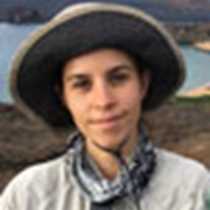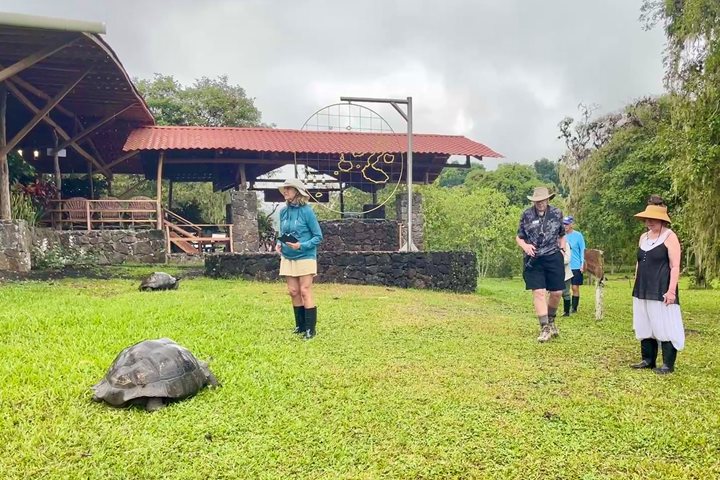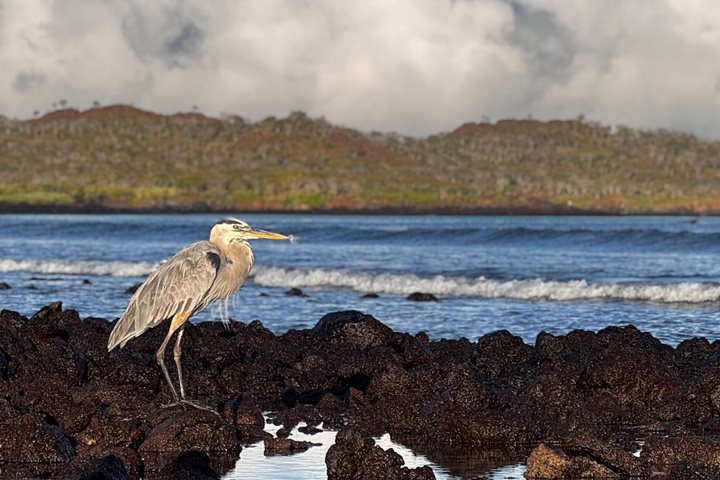This was our first full day in the Galapagos, and we can say it was a wonderful one. The island of North Seymour is small, but full of wildlife. The animals that typically make it to oceanic islands are birds and reptiles, and these are exactly the kind of animals we find here. Blue-footed boobies, frigatebirds and land iguanas call North Seymour home. Oceanic islands provide a secure nesting area, since no big predators can survive the journey through the sea, except rats! That is why, in 2019, conservationists worked on eradicating rats so that the endemic and native wildlife can live peacefully. That is what we got the chance to see today, animals living in perfect harmony and unafraid of us. In the afternoon, we visited Rabida Island, where we enjoyed water activities and finished our day with a nice stroll along the beach.
5/29/2025
Read
National Geographic Gemini
Genovesa Island
Genovesa is considered one of the Galapagos crown jewels, and today it was showing off all of its splendor. Immediately after breakfast we put on our sturdy shoes and set out to explore Prince Philip’s Steps. This area is known for opportunities to observe not only large colonies of nesting Nazca and red-footed boobies, but maybe, just maybe, the short-eared owl which exhibits diurnal behavior on this island. After this walk we got ready for a dip in the Pacific Ocean and snorkeling along the inner coast of this caldera. The afternoon was equally amazing as we disembarked to explore Darwin Bay, along a short and easy trail that was packed with wildlife. Here we observed not only nesting frigatebirds, red-footed boobies, and Nazca boobies, but also a few yellow-crowned night herons. It was another incredible afternoon in the Galapagos Islands.









